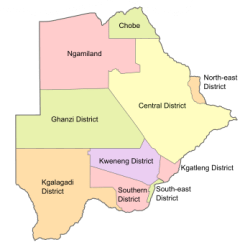Ethiopia’s administrative system is a multi-tiered structure, with districts, known as woredas (Amharic: ወረዳ; Oromo: Aanaa woreda), forming the third level after zones and regional states. These districts play a critical role in governance, serving as the primary units of administration and resource allocation for local populations.
Woredas are the backbone of Ethiopia’s administrative framework, enabling localized governance and service delivery. Despite challenges, efforts to empower these districts through decentralization and infrastructure investment continue to drive Ethiopia’s development. As Ethiopia evolves, the role of woredas remains central to ensuring equitable growth and stability.
Overview of Woredas in Ethiopia
- Hierarchy:
Woredas are nested within zones, which are part of the larger regional states. In some cases, special districts bypass the zone structure, functioning autonomously. - Subdivisions:
Woredas are further divided into smaller units called kebeles, which act as the smallest level of government in Ethiopia. These kebeles often serve as neighborhood associations for urban areas or small communities in rural regions. - Types of Woredas:
Ethiopia includes approximately 670 rural woredas and 100 urban woredas. The terminology can vary, with urban areas often classified as “city administrations” rather than traditional woredas.
Administrative Structure of a Woreda
A woreda typically comprises three key branches:
- Council:
- The highest governing body of the district.
- Members are directly elected from kebeles within the woreda.
- Responsible for enacting policies and overseeing development efforts.
- Executive Branch:
- Includes the district administrator, deputy administrator, and sectoral office heads.
- Implements policies and coordinates administrative functions.
- Judiciary/Security:
- Managed under the Security and Justice Administration.
- Handles local disputes and quasi-judicial functions.
In urban woredas or city administrations, governance is led by a mayor elected by the city council.
Special Woredas
“Special woredas” are unique districts that cater to the specific needs of ethnic minorities. Unlike regular woredas, these are not part of a zone and enjoy a higher degree of autonomy. Examples include historical areas like Yem Special Woreda, which are organized around traditional ethnic or cultural homelands.
Governance and Decentralization
In 2002, Ethiopia transferred significant administrative responsibilities to woredas. This decentralization included moving staff and budgets from regional governments to districts, empowering local governments to manage resources and deliver services more effectively.
List of Woredas by Region and Zone
Below is an organized listing of woredas, grouped by their respective regions and zones.
1. Addis Ababa (City Administration)
- No zones; directly divided into subcities such as Bole, Gullele, and Lideta.
2. Afar Region
- Zones: Awsi (Zone 1), Kilbati Rasu (Zone 2), Gabi Rasu (Zone 3).
- Woredas: Asayita, Afambo, Chifra, and more.
3. Amhara Region
- Zones: North Gondar, South Wollo, East Gojjam.
- Woredas: Dabat, Debark, Dessie Zuria, Gozamin.
4. Benishangul-Gumuz Region
- Zones: Metekel, Assosa, Kamashi.
- Woredas: Bambasi, Kamashi, Mandura.
5. Gambela Region
- Zones: Nuwer, Agnuwa, Majang.
- Woredas: Gambela Zuria, Itang Special Woreda.
6. Harari Region
- Single entity with city administrations like Harar.
7. Oromia Region
- Zones: Arsi, Bale, Jimma, East Shewa.
- Woredas: Adama, Deder, Shashamane, Sebeta Hawas.
8. Sidama Region
- Zones: Divided into woredas like Hawassa Zuria, Aleta Wendo.
9. Somali Region
- Zones: Jijiga, Fafan, Korahe, Liben.
- Woredas: Kebri Dehar, Gode, Fik.
10. Southern Nations, Nationalities, and Peoples’ Region (SNNPR)
- Zones: Wolaita, Gedeo, Gurage.
- Woredas: Arba Minch Zuria, Chencha, Wolayita Soddo.
11. Tigray Region
- Zones: Central, Eastern, Southern, and Western Tigray.
- Woredas: Mekelle, Alamata, Axum.

Challenges in Woreda Administration
- Resource Constraints: Limited budgets can restrict development initiatives.
- Ethnic Conflicts: Disputes in multi-ethnic areas can disrupt governance.
- Infrastructure Gaps: Rural woredas often struggle with poor road networks and connectivity.












